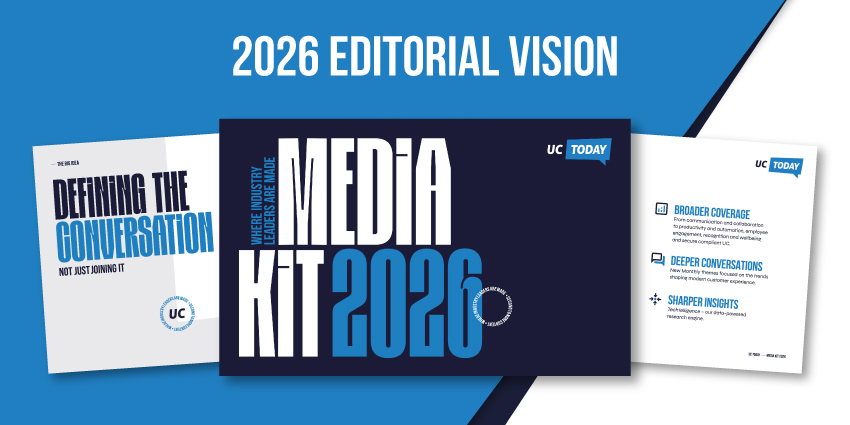In recent years, the rapid transformation of the workplace has made “Unified Communications,” or UC, an essential part of any business technology stack. Agile tools for communication and collaboration are crucial for aligning teams and ensuring productivity in the age of hybrid work.
These powerful tools help businesses to ensure every staff member has the resources required to excel, regardless of their location. Unfortunately, the digital workplace also comes with challenges to consider. Companies need to manage, monitor, and optimize various applications, vendors, and interfaces, placing significant strain on IT managers.
A comprehensive solution for UC performance management ensures organizations can access actionable intelligence and live data from across their UC estate, paving the way to increased adoption, enhanced user experiences, and more manageable costs.
Overcoming the Challenges of UC Management
For many companies, the “hybrid work” landscape is the new norm. Digitization is transforming how teams communicate, connect, and align in the modern world. Studies show up to 61% of high-growth companies have already adopted flexible working models, and many others are following suit.
In these landscapes, employees are distributed across various landscapes. These team members often use a blend of cloud UC platforms (such as Microsoft Teams or Webex) alongside on-premises PBX systems, supporting applications, and tools. This complex ecosystem presents a variety of challenges to IT managers, from limited visibility into technology performance, to issues with adoption.
Often, disconnected UC environments can also lead to increased operational costs, new challenges with security and compliance, and even data silos. Companies need a comprehensive way to monitor and manage their “UC fingerprint” with the right data, analytics, and insights.
This is where UC performance management solutions shine, giving companies the ability to align multiple tools and ecosystems, so they can make informed decisions, improve service delivery, and even resolve problems at speed.
The 3 Pillars of UC Performance Management
UC performance management software is a comprehensive solution for boosting visibility and control over your UC estate. It ensures companies can leverage everything from real-time monitoring and troubleshooting tools, to in-depth analytics, even in complex multi-vendor UC environments.
Performance management tools automate the collection of structured and unstructured data from various sources and convert raw information into actional insights. Although performance management tools can differ in functionality, the right solutions should always focus on the following three pillars for UC success:
1. Tools for Enhancing User Experience
Exceptional user experiences are crucial for ensuring the adoption of innovative tools in the workplace, and increasing return on investment. Any effective UC estate should give employees a seamless, intuitive experience, regardless of their location or chosen tools.
An end-to-end US performance management solution will offer a selection of solutions to monitor, evaluate, and enhance user experience, including:
- UC monitoring capabilities: Monitoring tools provide comprehensive visibility into the health and performance of your UC ecosystem. They align insights from multiple UC vendors, helping you to visualize your UC estate, and make proactive decisions. These tools can even easily track root causes of issues, improving mean time to resolution, reducing service disruptions, and minimizing the risk of network latency.
- UC analytics: Analytical tools allow companies to generate insightful reports into the duration of incidents, and their impact on productivity. They ensure organizations can analyze call paths and issues, report on call detail records, and fix problems rapidly with valuable insights into quality of service, mean opinion score, and more.
- Proactive testing: With proactive testing tools, business can test chosen call paths to ensure their continued performance and reliability, identify latency in call hops, and troubleshoot potential problems. This all ensures companies can maintain optimal performance and improve the overall user experience.
2. Comprehensive Monitoring and Service Readiness
Tools for ensuring service readiness help organizations preserve the quality and reliability of UC services. They allow businesses to proactively identify and resolve issues before they impact users, reducing downtime and increasing productivity.
Predictive and proactive solutions with in-built AI, machine learning, and proactive course corrections ensure companies can enhance:
- UC availability: Advanced monitoring techniques allow companies to carefully track the availability of essential components and take preemptive action against interruptions.
- UC observability: With real-time insights into your UC infrastructure performance, you can rapidly address issues before they have a lasting impact on your team.
- Compliance: With security and compliance tools, companies can automate tasks such as compliance checks, reporting, audit trails, and more, boosting compliance.
- Auditing: Robust auditing frameworks allow companies to track and record every change in their UC environment, ensuring ongoing transparency and accountability.
- Scalability: An effective toolkit can simplify the scaling process by helping businesses to plan for capacity increases, integrations with new technology and more.
3. Cost Management
Though the right unified communication tools can help to minimize operating costs and improve return on investment, businesses need to ensure they’re using their budget effectively. Powerful UC service monitoring tools help to protect and enhance a company’s financial health by:
- Improving asset utilization and spending: A single, user-friendly dashboard gives companies a way to monitor, understand, and analyze asset utilization and spending. This ensures companies can make the right decisions for growth and cost reduction.
- Understanding user behavior: With deep-dive insights into user behavior and key business metrics, you can monitor usage and adoption rates. This empowers business leaders to distribute resources more effectively and reduce unnecessary costs.
- Monitoring platform consolidation: The right tools make cost management easier by aligning and consolidating monitoring platforms. With all of your insights integrated into a single solution, you can ensure end-to-end visibility into your UC estate.
- Cost analytics: Tools for cost analytics gather valuable data from multiple environments and present them in customizable dashboards. They allow companies to analyze usage, identify costs, and drill down into specific details with ease.
- Discovery and configuration management: Effective solutions make it easier to track changes in a UC estate, preserve control over costs, and even schedule reports to empower seamless, data-driven decision making.
The Full Power of UC Performance Management
As workplaces continue to evolve, UC tools are at the heart of the digital transformation efforts of countless companies. They’re crucial for keeping your teams aligned and productive, in any environment. However, complex estates can be difficult to manage.
A comprehensive UC performance management platform, focusing on the three pillars above, gives companies the power to boost visibility into their estate. With the right tools, business leaders can improve user experience, reduce costs, and minimize potential communication problems.







